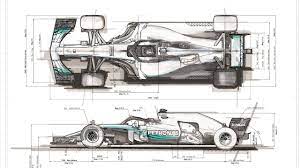Are you curious about the brilliant minds behind the intricate components that make up Formula One cars? Look no further than the F1 design engineers who are responsible for pushing the limits of technology in the world of motorsport.
In our article, “Meet the Masterminds: Getting to Know the F1 Design Engineers Pushing the Limits of Technology,” we take a closer look at the individuals who are at the forefront of innovation in F1 racing. From aerodynamics to engine performance, these engineers work tirelessly to ensure that their team’s cars are at the forefront of technological advancements.
In this article, we explore what motivates these engineers to push the boundaries of what is possible and how their work impacts the world of motorsport. Join us on a journey into the fascinating world of F1 design engineering, as we delve into the challenges these engineers face and the groundbreaking technologies they create.
Discover how these masterminds are responsible for propelling F1 cars to speeds of over 200 mph and learn about the incredible work they do to keep their teams ahead of the competition.
What Do F1 Design Engineers Do?

A design engineer’s job is to create a race car that is aerodynamically efficient, lightweight, and powerful. They work closely with aerodynamicists, vehicle dynamics engineers, and other specialists to ensure that every aspect of the car is optimized for speed and performance.
The design process starts with a concept, which is then developed into a detailed design using computer-aided design (CAD) software.
The engineers must consider every detail, from the shape of the car to the positioning of the engine, to ensure that it meets the strict regulations set by FIA. Once the design is complete, the engineers move on to testing and refining the car.
They use wind tunnels and computational fluid dynamics simulations to optimize the aerodynamics of the car. They also conduct track testing to fine-tune the vehicle dynamics and ensure that it can handle the high speeds and tight corners of the F1 circuit.
One of the keys to success in F1 racing is innovation. Design engineers are constantly pushing the limits of technology to gain a competitive edge. They are always looking for new materials and design techniques that can improve the performance of the car.
The F1 design engineering world is home to some of the brightest minds in engineering. These masterminds are responsible for creating some of the most advanced and sophisticated race cars in the world.
They are constantly pushing the boundaries of what is possible in engineering and technology.
F1 Design Engineers Qualifications
To become a design engineer in the world of F1 racing, you need a strong educational background in engineering. Most design engineers hold a bachelor’s or master’s degree in mechanical engineering, aerospace engineering, or a related field.
In addition to education, design engineers must have a deep understanding of aerodynamics, vehicle dynamics, and other aspects of automotive engineering. They should also have experience with computer-aided design (CAD) software and other engineering tools.
Strong communication and teamwork skills are also essential for success in this field.
Design engineers work closely with other specialists, such as aerodynamicists and vehicle dynamics engineers, to ensure that every aspect of the car is optimized for speed and performance.
The world of F1 racing is highly competitive, and design engineers must be willing to work tirelessly to gain a competitive edge and help their team succeed.
F1 Design Engineers Qualifications
To become a successful design engineer, a strong educational background in engineering is crucial.
Most design engineers hold a bachelor’s or master’s degree in mechanical engineering, aerospace engineering, or a related field. In addition, a deep understanding of aerodynamics, vehicle dynamics, and other aspects of automotive engineering is essential.
Design engineers should also have experience with computer-aided design (CAD) software and other engineering tools.
They must possess strong communication and teamwork skills to work closely with other specialists, such as aerodynamicists and vehicle dynamics engineers, to ensure that every aspect of the car is optimized for speed and performance.
Lastly, having a passion for motorsports and a desire to push the limits of technology and innovation are also important qualities for a successful design engineer in the world of F1 racing.
The field is highly competitive, and design engineers must be willing to work tirelessly to gain a competitive edge and help their team succeed.

